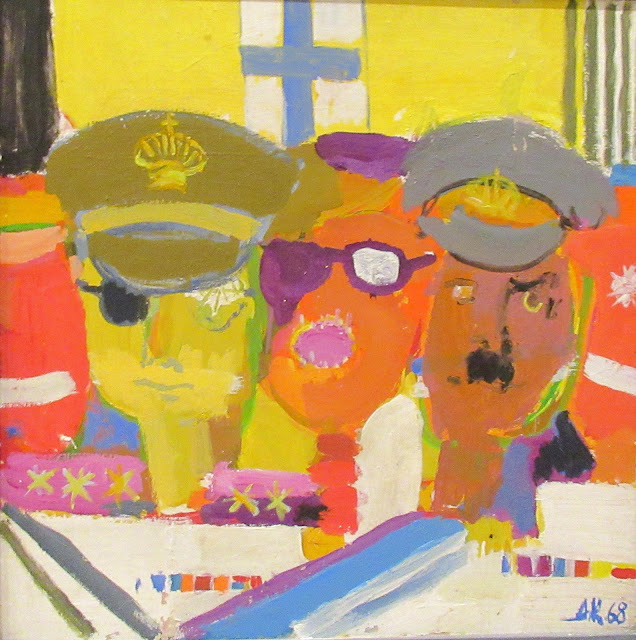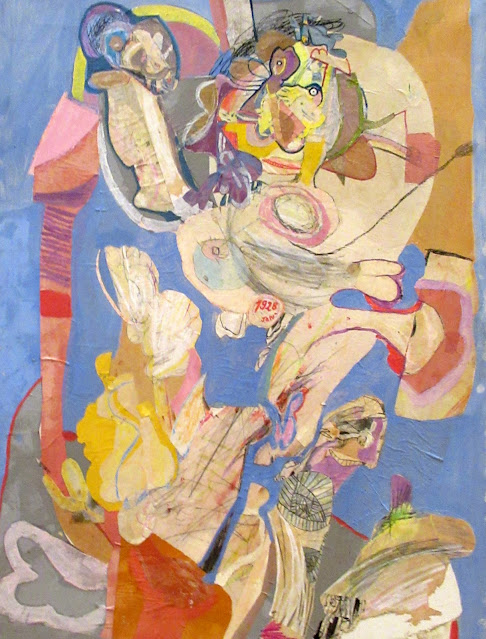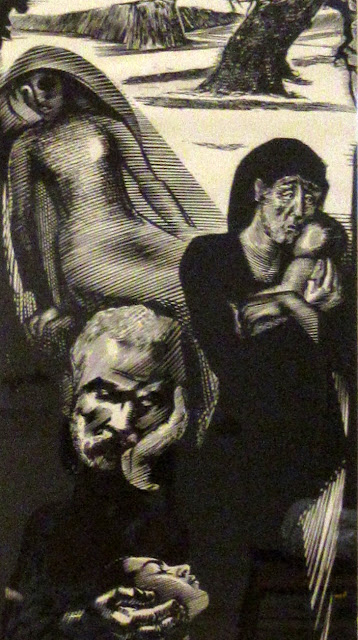This exhibition coincides with the 50th anniversary of the restoration of democracy in Greece after the collapse of the seven-year military dictatorship. Two factors contributed to the end of tyranny: the Athens Polytechnic uprising in November 1973, and the coup and Turkish invasion of Cyprus. The 24th of July 1974 was a turning point for Greece. It was during the same period that the considerably longer dictatorships of Salazar-Caetano (1933-1974) in Portural and Franco in Spain (1936/1939-1975) were also terminated. Consequently, the exhibition focuses on the art of the struggle for democracy in Greece, Portural and Spain.
It's structured around four sections: identifying the enemy; resistance; uprising and arousal, enjoying freedom again. Amongst other topics it explores the practices that emerged from the fight for freedom; the role of abstract art; the prominence of social realism; the art of protest in print and posters; the politics of the body.
I really enjoyed this exhibition but feel I did not do it justice in this blogpost. It all takes place in one large space and I found it difficult to differentiate where the different sections were, so it has all come all jumbled up in my blogpost. Anyway, I hope you are able to enjoy the art, even if there does not seem to be much coherence in it.
Yannis Gaitis, Five or Six, (paint on panel construction)
These surrealistic, restless, distorted and fragmented bodies reveal Rego's critique of the climate of repression and prohibitions during an exhaustingly long dictatorship.
looking at the individual panels
Kyriakos Katzourakis, Che, 1970, (oil on canvas)
Lefteris Kanakakis, Mournful Helmet, Trumpet, Flag, 1962, (oil on canvas)
Giorgos Ioannou, From the Well-Known Experience, 1973, (oil on linen)
This and the following few are about the Polytechnic uprising which led to the end of the military dictatorship in Greece
Giorgos Ioannou, Panepistimiou Street, 16.1.73, 18:30 (oil on linen)
Panepistimiou Street is where the University is.
Konstantinos Malamos, The First Anniversary, 1975, (screenprint on paper)
Alberto Solsona, The Art of War, 1973, (acrylic on canvas)
Tzobanakis Manolis, Archangel, 1976, (reinforced concrete)
Tassos (Anastasios Alevizos), The Archangel with the Machine Gun,In Memory of Che Guevara, (woodcut on paper)
Tasso produced these works during Greece's seven-year military dictatorship, 1967-74. He confessed that the peculiar psychological conditions of the final years, the unbearable, daily violation of human dignity, could have had literally devastating consequences for him, were it not for the solace of artistic expression - his sole lifeline. In his multi-figure, frontal prints depicting both known and unknown fighters for democracy and social justice, Tassos captures grief, defiance, pain, rage and militancy, as well as the act of standing up to modern forms of tyranny. He achieves this by drawing on the cultural memory of religious art and folk iconography of heroes and warrior saints.
























































No comments:
Post a Comment